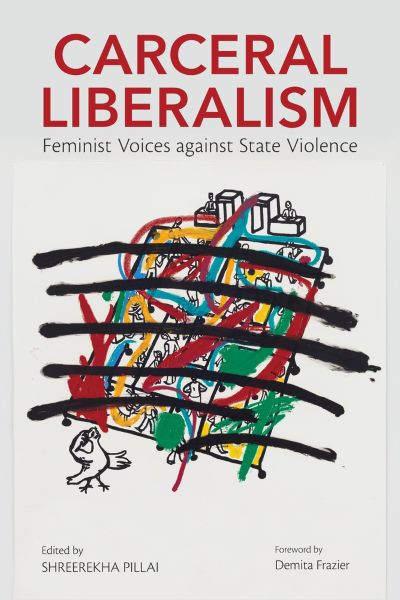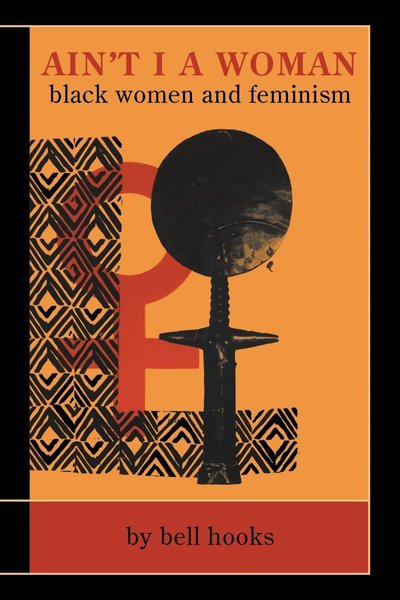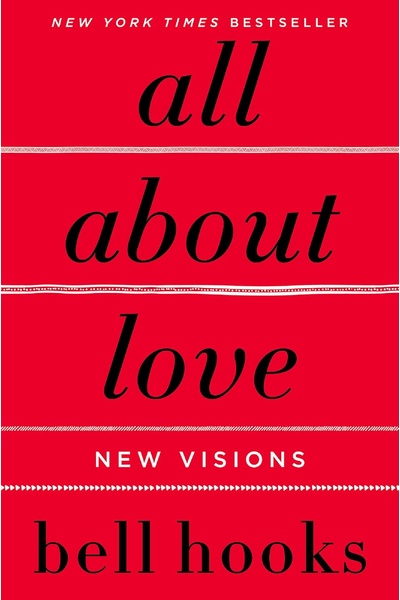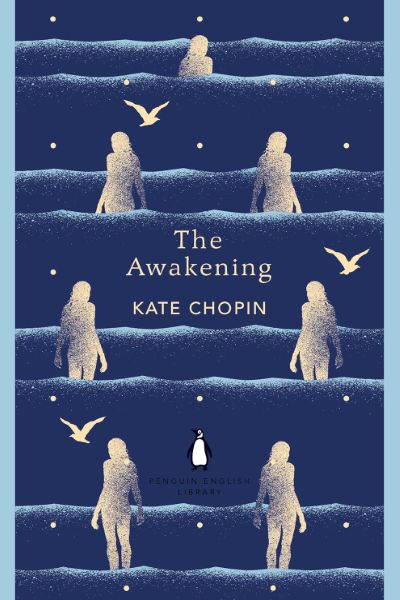Carceral Liberalism: Feminist Voices Against State Violence
One of Ms. Magazine's Most Anticipated Books of 2023. Continuing the trajectory of the Combahee River Collective, this collection brings together scholars, activists, and writers to examine how carceral liberalism masquerades as freedom while perpetuating oppression, critiquing the confluence of neoliberalism, incarceration, and patriarchy.

📝 Book Review
In contemporary American political discourse, “freedom” is a repeatedly invoked value. From individual rights to market economies, from free speech to lifestyle choices, freedom seems like an unquestionable good. However, in this collection edited by Shreerekha Pillai, “Carceral Liberalism,” feminists from various fields reveal a disturbing truth: certain forms of “freedom” are actually the most sophisticated forms of oppression. Carceral liberalism is precisely such an ideological construction—it waves the feminist flag while continuing to marginalize most women; it proclaims a post-race society while one in three Black men remain incarcerated; it sings the praises of capital while the dispossessed remain mired in debt. This 2023 collection, named one of Ms. Magazine’s most anticipated books of the year, continues the radical tradition of the Combahee River Collective, providing theoretical tools and political vision to critique this ideological hegemony.
The concept of “carceral liberalism” itself is a theoretical innovation. It points to the confluence of neoliberalism, carcerality, and patriarchy, revealing deep connections between seemingly contradictory political phenomena. On the surface, neoliberalism emphasizes individual freedom and market choice, while the carceral state represents coercion and punishment. But Pillai and the book’s contributors argue that these are actually two sides of the same coin: neoliberalism individualizes structural inequality through its emphasis on personal responsibility and self-entrepreneurship; when individuals fail to “succeed” in this system, the carceral system intervenes as a mechanism of punishment and control. And patriarchy permeates this entire structure, determining which bodies are viewed as threats, which lives are expendable.
The anthology’s arrangement is ingeniously crafted. It is organized into multiple sections, each exploring different dimensions of carceral liberalism, with each section bookended by works from acclaimed poets like Honorée Fanonne Jeffers and Solmaz Sharif. This structure not only allows theoretical analysis and artistic expression to illuminate each other but, more importantly, embodies one of the book’s core claims: resistance is not only intellectual but also aesthetic, emotional, and imaginative. Poetry opens spaces that theoretical essays cannot reach, allowing us to feel the pain of incarcerated bodies, the resilience of marginalized lives, and the longing for another world.
Demita Frazier’s foreword carries special historical weight. She was one of the drafters of the 1977 Combahee River Collective Statement, a foundational text of intersectional feminist theory. The Combahee River Collective, composed of Black lesbians, clearly articulated how oppressions of race, class, gender, and sexuality interweave, and why it is impossible to oppose one form of oppression without opposing others. More than forty years later, Frazier notes in her foreword that the Collective’s analysis is not only still relevant but has become even more urgent. Carceral liberalism is the manifestation of those systemic oppressions they critiqued under new historical conditions.
The anthology’s contributors come from diverse positions and experiences. They include scholars, activists, writers, and a formerly incarcerated social worker. This diversity not only enriches analytical perspectives but, more importantly, embodies a core feminist commitment: those who most directly experience oppression must be centered in defining and analyzing it. The voices of formerly incarcerated people are particularly valuable because they can not only theorize the carceral system but witness its daily operations, revealing its destruction of human bodies, minds, and relationships.
The collection explores carceral liberalism’s manifestations across multiple domains. A key area is the criminal justice system itself. America has the world’s highest incarceration rate, with over two million people held in prisons and jails. This massive carceral system is not accidental but the result of deliberate policy choices—from the “War on Drugs” beginning in the 1970s, to “three strikes” laws in the 1990s, to the rise of mass incarceration. Contributors reveal that the implementation of these policies coincided with the advancement of neoliberal economic policies: as government cut social welfare, privatized public services, and created mass unemployment, prisons became tools for managing “surplus populations.”
Race plays a determining role in this process. Although Black people comprise only 13% of the U.S. population, they account for nearly 40% of the prison population. One in three Black men will experience incarceration in their lifetime. This is not because Black communities have higher crime rates but because law enforcement systems systematically target Black communities—from overpoliced Black neighborhoods to racialized drug law enforcement to racial bias at every stage of the criminal justice system. Contributors argue that mass incarceration is a continuation of slavery and Jim Crow, a mechanism continuing to deprive Black people of freedom, labor, and life through new forms.
But this book’s unique contribution lies in its feminist perspective. For a long time, critiques of mass incarceration focused primarily on male prisoners, while the experiences of women—particularly women of color—were often overlooked. However, women’s incarceration rates have actually grown faster than men’s, and women prisoners face particular forms of violence and exploitation. They are more likely to be incarcerated for non-violent crimes, more likely to “offend” in order to survive or protect themselves and their children, more likely to suffer sexual assault and gendered abuse in prison. More importantly, incarceration’s impact on women extends beyond prison walls: they are mothers, partners, daughters of incarcerated men, bearing the emotional and economic burden of maintaining families and communities.
The collection particularly focuses on how incarceration intersects with reproductive control. Historically, the state has always attempted to control the reproductive capacity of women—particularly poor women and women of color. In prisons, this control reaches extremes: women are forcibly sterilized, denied abortion rights, shackled to hospital beds during childbirth, and have their children taken away immediately after birth. Some states even have laws requiring pregnant inmates to be separated from their infants within 48 hours of birth. Contributors reveal that these policies are not only cruel but deliberate: they aim to break family bonds in communities of color and prevent “unwanted” population reproduction.
Immigration detention is another key dimension of carceral liberalism. Over the past few decades, America has built a massive immigration detention system, detaining hundreds of thousands annually. These detention centers—many operated by private companies—often have worse conditions than prisons, with detainees lacking due process protections and potentially held indefinitely. Women immigration detainees face particular vulnerabilities: many are fleeing gender-based violence only to find themselves sexually assaulted again in detention centers; mothers are forcibly separated from children, causing lasting psychological trauma. Contributors argue that immigration detention is the intersection of American imperialism and racism: it punishes those driven from their homes by U.S. foreign policy and economic exploitation while reinforcing racialized notions of who “belongs” to America and who is a threat.
The collection also explores how carceral liberalism permeates welfare systems, education systems, and healthcare systems. Under neoliberal reforms, welfare systems increasingly resemble prisons: women receiving welfare are strictly monitored, must follow onerous rules, and face arbitrary punishment. If they “violate”—such as missing an appointment or testing positive for drugs—they may lose benefits or even custody of their children. In schools, particularly those serving students of color and poor students, disciplinary policies have become increasingly harsh, police are stationed on campuses, students are arrested for minor infractions—this is called the “school-to-prison pipeline.” In healthcare systems, doctors and social workers are required to report certain behaviors—such as drug use during pregnancy—causing poor women and women of color to fear seeking medical care because it might lead to prosecution or losing children.
What these systems share is that they individualize social problems, treating people who need support as threats requiring surveillance. They operate the core logic of carceral liberalism: those who cannot “succeed” in the neoliberal economy are not victims of structural inequality but examples of personal failure who should be punished and controlled. And so-called “freedom”—market freedom, freedom of choice—in this framework belongs only to the privileged. For marginalized communities, “freedom” is an illusory promise masking the reality of incarceration and control.
The anthology’s contributors not only critique carceral liberalism but also document and analyze resistance to it. From the Black Lives Matter movement to abolitionist organizing, from protests inside prisons to community-led alternative justice projects, resistance takes multiple forms. Particularly important are grassroots organizations led by formerly incarcerated people and family members affected by incarceration. They not only advocate for criminal justice reform but propose radical visions of abolishing the carceral system itself, building communities based on care, restoration, and collective responsibility rather than punishment and retribution.
The abolitionist perspective occupies an important place in this book. Abolitionists argue that the prison system cannot be reformed because its very purpose is oppression and control, particularly of Black people and other marginalized groups. True justice is not improving prison conditions or reducing sentences but creating a society that doesn’t need prisons—a society providing economic security, housing, healthcare, education, a society addressing harm through transformative justice rather than punitive justice. Critics say this is utopianism, but abolitionists respond: the current system is truly utopian, fantasizing that violence and exclusion can create safety.
The collection particularly emphasizes the unique contributions of feminist abolition. Feminists have long critiqued punitive institutions, from opposing domestic violence to challenging forced sterilization, from supporting sex workers’ rights to advocating reproductive justice. Feminist abolition connects these struggles, recognizing that all forms of state violence—from police violence to incarceration, from border enforcement to welfare surveillance—are interconnected and must be challenged together. It also particularly focuses on the importance of care and relationships, proposing a vision of justice based on community care rather than state punishment.
Contributors also attend to the importance of language and framing. A key strategy of carceral liberalism is appropriating progressive language, packaging oppressive policies as empowerment or protection. For example, crackdowns on sex workers are called “combating human trafficking”; detention of immigrants is called “protecting border security”; surveillance of welfare recipients is called “personal responsibility.” Even some feminists have been absorbed into this discourse, supporting harsher criminal sanctions to “protect” women from sexual violence—without recognizing this actually reinforces the punitive state they claim to oppose. The collection’s contributors expose these discursive strategies, redefine key terms, and create new language to describe oppression and imagine liberation.
Poetry plays an indispensable role in this project. Works by poets like Honorée Fanonne Jeffers and Solmaz Sharif not only embellish the collection but deepen and extend its arguments. Poetry can express truths that theoretical language cannot capture—the sensory experience of incarcerated bodies, the emotional weight of racialized violence, the subtle texture of community resilience. They also provide another way of knowing, a way of understanding the world not only through analysis but through imagination, not only through reason but through emotion. In this sense, poetry itself is an abolitionist practice: it refuses the reductive frameworks of carceral liberalism, insisting on complexity, contradiction, and openness.
The book was published in 2023, a moment when America’s carceral state continues to expand. While discussion of criminal justice reform has increased in recent years, substantive change has been limited. Prison populations have slightly declined, but immigration detention has surged; some states have eliminated cash bail, but others are building more prisons; police violence continues to spark protests, but police budgets keep increasing. Against this background, “Carceral Liberalism” offers not optimism but clarity and direction. It helps us understand why reforms often fail, why we need more radical visions, and what that vision might look like.
The collection is also relevant to debates within contemporary feminism. In recent years, some feminists have aligned with state power, supporting harsher criminal sanctions to address sexual violence or supporting military intervention to “save” women in other countries. Carceral feminism critiques these tendencies, showing how they re-enact imperialist and racist violence, though cloaked in feminist garb. It reminds us that feminism, if it does not oppose all forms of state violence, if it does not center the liberation of marginalized groups, becomes a tool of oppression.
Pillai emphasizes in the introduction that this book is a product of collective work, reflecting the values it advocates. The editing process itself was a practice attempting to build non-hierarchical, mutually supportive relationships, valuing different types of knowledge and experience. This methodology acknowledges that opposing carceral liberalism is not only an intellectual project but an ethical and political one. It demands that we embody the values we pursue not only in our analysis but in our practices, in our relationships, in how we build movements.
“Carceral Liberalism” is a book that demands deep reading. Its arguments are complex, its references wide-ranging, it challenges readers to rethink many taken-for-granted assumptions. But this intellectual challenge is necessary because we face a complex and deeply entrenched power system. Simple answers and quick solutions are not only ineffective but dangerous because they may reconsolidate the structures we claim to oppose.
This book is also an invitation—an invitation to join an ongoing conversation and struggle. It does not provide blueprints or final answers but offers tools, frameworks, and inspiration enabling us to do critical and constructive work in our own positions. It connects different struggles—against incarceration, against racism, against patriarchy, against capitalism—showing how they converge in a shared pursuit of freedom. And this freedom is not the false freedom promised by carceral liberalism but true collective liberation: no one is free until we are all free.
After reading “Carceral Liberalism,” we can no longer view the word “freedom” in the same way. We are forced to acknowledge that many policies advanced in freedom’s name actually deepen oppression; many reforms called progressive actually consolidate power structures. But this disenchantment is not despair but sobriety. Only when we see carceral liberalism’s true face can we begin building truly liberatory alternatives. This book provides an indispensable guide for this work, inheriting the legacy of the Combahee River Collective, illuminating the path forward for a new generation of radical feminists.
Book Info
Related Topics
🛒 Get This Book
 Buy on Amazon
Buy on Amazon Related Books
Book Discussion
Share your thoughts and opinions on this book and exchange insights with other readers
Join the Discussion
Share your thoughts and opinions on this book and exchange insights with other readers
Loading comments...


